Originally published on Nintendo Castle.

Top-down action RPGs have seen something of a resurgence in recent years as titles such as Path of Exile and the recently announced Diablo 4 compete for a share in this genre of games. While many of these games lean into the grind that comes with this style of RPG, others, such as the recently released Viking Vengeance, attempt to make the base gameplay more interesting rather than exponentially extending content. But, does Viking Vengeance succeed at creating a compelling competitor to industry giants?
Platform: Steam [Reviewed]
Developer: Lowpoly Interactive
Release: April 8, 2021
MSRP: $19.99
Press copy provided by Lowpoly Interactive
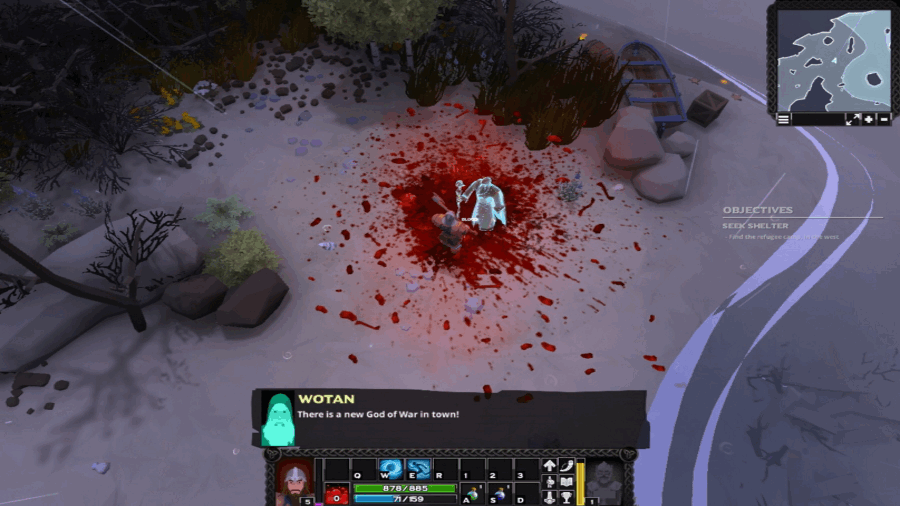
Viking Vengeance is an interesting case in the ARPG genre of forgetting fundamentals. This is true in almost every way, but, let’s start with the story. While the story is interesting premise-wise, the execution is faulty in nearly every category. Dialogue seems bland and contrived, the lore is forced on you, the voice-acting is poor, and the entire plot just seems incoherent. This is just one part of the whole game, but it is a perfect glimpse into the rest of the experience from the very beginning.
The gameplay is poor as well. While they attempt to innovate everywhere, they miss the mark in most of these areas. As an example, the execution system is a cool idea. When an enemy reaches low health, they can be executed for a bonus in currency or an extra bit of HP to help the player survive. If executions were fast, stylish, and useful for more than just restoring health, this would be a great idea. Imagine decreasing the health of a group of enemies with a single AOE attack and then executing them all to both look cool and also gain a real bonus in-game. Unfortunately, for most, if not all weapons, the execution animation is basically just a slow-motion attack with a bunch of extra gore attached.
Abilities are described in great detail to make them sound cool. But, these same abilities usually end up being extremely disappointing. Dashes are usually just moving faster to a particular point while disabling unit collision. This is, technically, a dash. But, at the speed these dashes go, it’s more akin to speed walking than actually dashing.
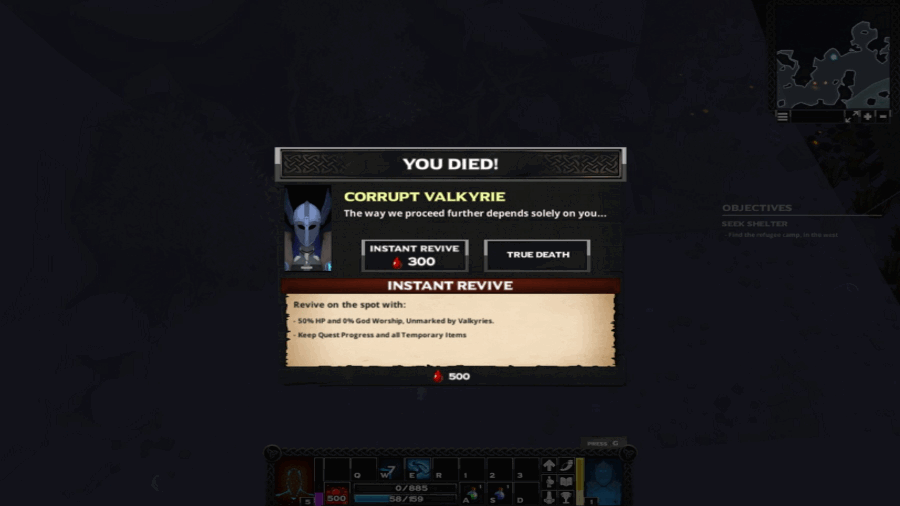
Many animations in these abilities seem unfinished, but they seem to do the intended effect just fine. In general, many similar titles reuse animations, or just splatter sound and visual effects to make a mediocre animation seem much better. Attacks in Viking Vengeance, however, seem genuinely wimpy compared to these other titles.
It is worth mentioning that Viking Vengeance is not a hoard game like Path of Exile or Diablo 3. Enemies are fewer but more powerful in general than the bosses are in these two examples. A proper build in Path of Exile can melt a boss in seconds, but your average enemy in Viking Vengeance takes a similar if not greater amount of time to kill just one of them.
The presentation, visually, is extremely muddled. When entering caves, the game becomes extremely difficult to see, and the player is expected to dodge falling rocks and fight spiders while this is true. The motion blur is oppressive when turned on, but can be turned off. Screen shake is similar in this way, and although they are both troublesome and the default, they get credit for patching in a way to remove them consistently.
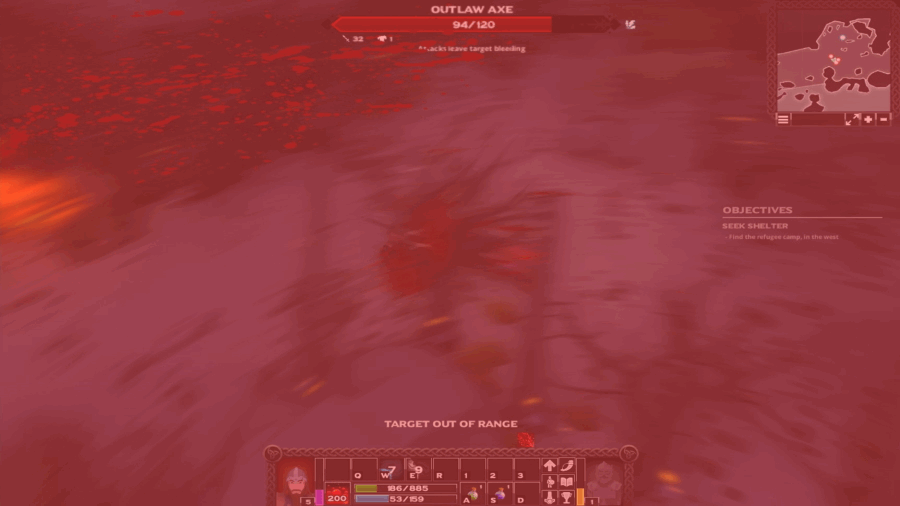
The worst part visually of Viking Vengeance is the low-health screen flash. The screen cycles between essentially normal and a bloody, mangled, and visually harsh shade of red. This happens more than once during combat while low on health, and makes the entire ordeal of being low on HP in the first place extremely hard to stomach.
These are fairly basic concerns, but at a higher level, the color composition of Viking Vengeance is poor as well. The game cycles between fire, blood, and extremely dark rock textures. There are other things in the game, but the average player will be unable to pick them out visually because of the mess caused by these three highly contrasting themes.
So far here, I’ve been glossing over a very important detail, however. In most cases, this would be a side issue, but Viking Vengeance is, on a technical level, extremely performance-intensive, glitchy, and inconsistent. Sound-wise, the sliders for volume didn’t appear to change all of the sounds of a specific category on my machine. For example, one attack might be quiet or at the intended volume, followed by an execution that would remain at the default volume. In this case, that effect would be extremely loud.
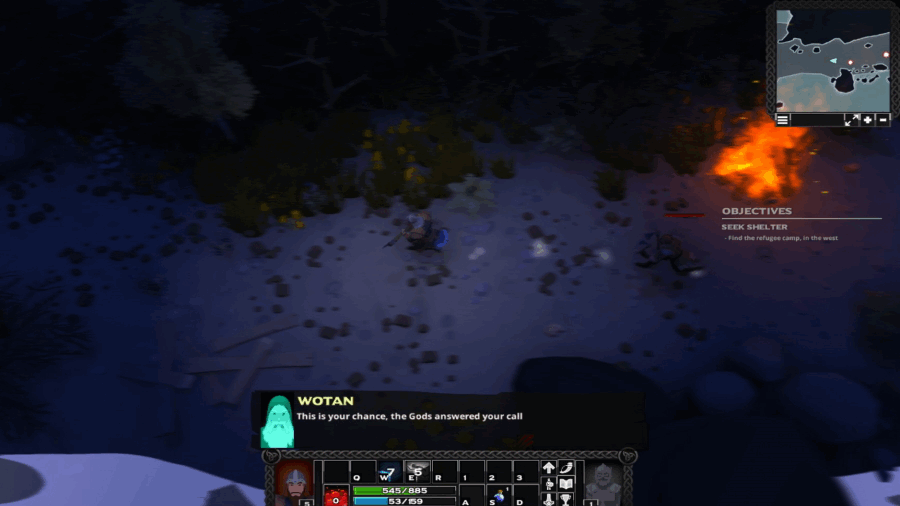
Although after the initial release, the developers appear to be cranking out bug fix after bug fix, it would take months at their current rate to be able to call the base game finished. That’s ignoring the poor design or lack of design given to multiple key areas of the game.
All of this being said, Viking Vengeance definitely has some things going for it. It features a small number of classes (2) with a high variety of playstyles based on weaponry and builds. A lot of care went into balancing abilities as well as designing builds, and it shows. Death is a setback for sure and requires that the player spend currency or restart an area to resurrect. This isn’t necessarily a bad thing, and while I would’ve personally preferred more checkpoints, this level of difficulty might be a good thing for those seeking a challenge.
However, the lack of any sense of polish, an abundance of technical problems, and the fact that the game just doesn’t feel great to play make this an easy title to avoid, at least for the time being.
Pros:
- Bold gameplay design decisions
- Challenging overall
- A small number of classes, but a high number of builds
- Interesting aesthetic
Cons:
- Lacking presentation at best
- Bland, incoherent story
- Poor voice acting
- Obstacles are difficult to see and dodge
- Many harsh and unpolished sounds during play
- Performance intensive
- Glitchy
- Poor animations
- Deaths are overly punishing
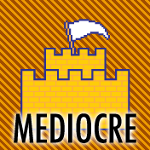
Mediocre
These games are generally unmemorable. For the average gamer, they probably aren't worth your time or money. Significant flaws in gameplay or a serious lack of content make these games inferior. These games usually have some redeeming qualities and may be enjoyed by a niche audience, but don't get a recommendation from us.